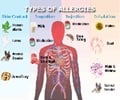The arrival of spring brings fragrant, blooming trees and lush green grasses – and sneezing and wheezing for millions of people with pollen allergy.
The arrival of spring brings fragrant, blooming trees and lush green grasses – and sneezing and wheezing for millions of people with pollen allergy.
Hay fever, or seasonal allergic rhinitis, affects an estimated 40 million Americans and causes symptoms of sneezing, itchy and watery eyes, runny nose and a burning or itchy sensation in the throat or palate. Spring allergy is most commonly caused by tree and grass pollens, and depends on where an allergic individual lives and the time of year that pollination occurs.While there is no way to accurately predict pollen counts or how bad this spring allergy season will be, according to the American College of Allergy, Asthma and Immunology (ACAAI), there are several factors that can influence how much allergy sufferers will sneeze, wheeze and itch their eyes.
• Mild Winter – Pollen Counts Increase: A mild winter can cause trees to pollinate earlier and could bring an early start to the allergy season. Mild and warm weather that continues in the spring also can increase pollen counts.
• Late Freeze – Pollen Counts Decrease: A late season freeze following a mild winter can inhibit, and possibly eliminate, a tree’s pollen production.
• Rain – Pollen Counts Decrease And Increase: Rain can provide some initial relief by reducing tree pollen counts, but is also can spur the growth of grass later in the spring and in early summer, producing more pollen. Rain in the preceding fall or winter may increase tree pollen amounts the following spring.
• Wind – Pollen Counts Increase: Windy weather increases pollen counts as pollens are spread throughout the air increasing exposure.
Advertisement
Grasses usually come along to stir up allergy symptoms after the trees are through pollinating – typically from late spring to early summer.
Advertisement
• Avoidance – reducing exposure to pollens by staying inside when pollen counts are at their peak; keeping windows closed and air conditioning on; wearing glasses or sunglasses when outdoors; washing hands and rinsing eyes after coming indoors to remove clinging pollen; and washing hair before bedtime after a prolonged outdoor exposure.
• Medication and Eye Drops – taking non-sedating antihistamines, oral decongestants, inhaled medications including anti-inflammatory nasal sprays and using eye drops to control and treat symptoms.
• Immunotherapy – receiving allergy shots to gradually decrease sensitivity to the things that cause allergy symptoms. Allergy shots often reduce and can eliminate the need to take medication.
Source-Newswise
SRM











